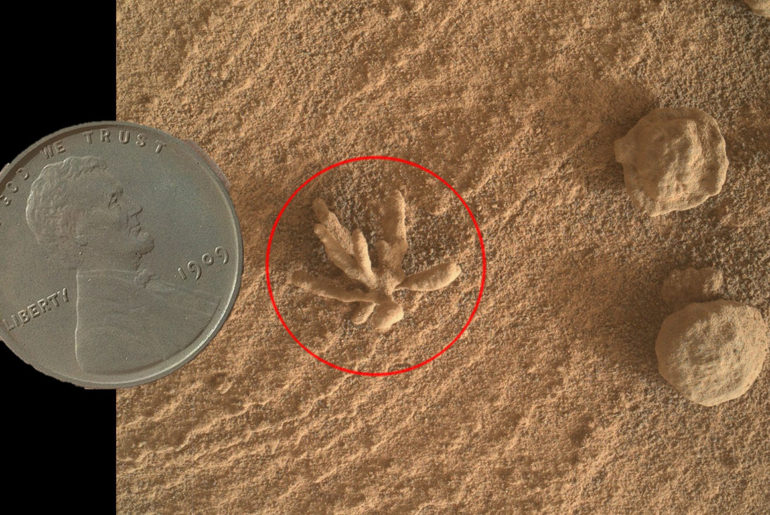
Photo credit: NASA via Abigail Freeman
NASA’s Curiosity rover spotted an odd-shaped rock on the surface of Mars, and by using its onboard focusing process, the Mars Hand Lens Imager (MAHLI), it provided a clearer view of this coral-like object. The imager first had to merge two to eight images previously taken by the MAHLI, located on the turret at the end of the rover’s robotic arm, to create the photograph you see here.

The shape is most likely due to diagenetic crystal clusters, which are essentially the recombination of minerals that form these three-dimensional objects. On a related note, the MAHLI focus merge is performed on Mars to reduce the number of images sent back to Earth, since the merge produces two images: a color, best-focus product and a black-and-white image that scientists can use to estimate focus position for each element of the best focus product.
- Compact and portable: This telescope for adults and kids to be used together is ideal for weekend camping trips or excursions to dark sky sites; Its...
- Flash upgradeable hand control software and motor control units for downloading product updates over the Internet
- SkyAlign allows you to align on any three bright celestial objects, making for a fast and easy alignment process
Curiosity performed the merge on February 25, 2022, Sol 3397 of the Mars Science Laboratory Mission, at 10:59:54 UTC. The focus motor count position was 13810. This number indicates the lens position of the first image that was merged. The onboard focus merge is sometimes performed on images acquired the same sol as the merge, and sometimes uses pictures obtained on an earlier sol,” said NASA.





